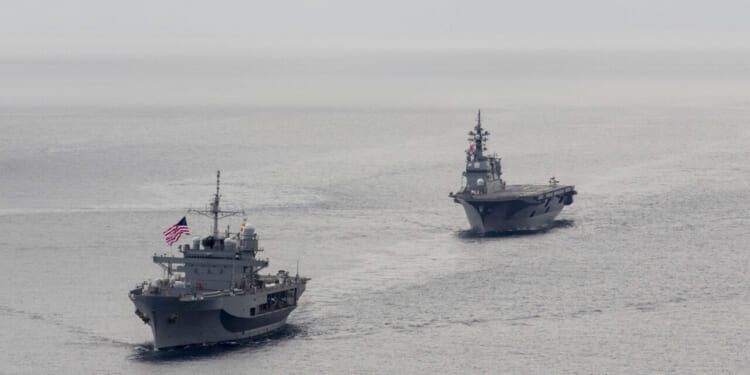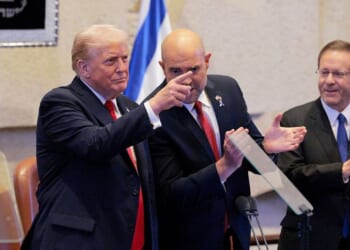Exercises like Freedom Edge 25 are designed to hone interoperability between the US military and allies and partners.
Earlier in September, US Navy, Japanese, and South Korean warships got together and honed their warfighting capabilities in one of the largest maritime exercises in the Indo-Pacific.
Under the mantle of Exercise Freedom Edge 25, warships from the three countries practiced a number of mission sets with an eye toward China and North Korea.
Freedom Edge 25
During the five-day exercise (September 15-19), warships and air assets from the three countries worked together in multi-domain operations. Some of the tasks they completed were defensive counter-air; anti-surface warfare; maritime interdiction operations; visit, board, search, and seizure; counter-piracy; medical evacuation; and replenishment-at-sea operations.
“Freedom Edge is a trilateral field training exercise integrating three nations strategic guidance to build trust, improve understanding, share information and perspectives, and to ultimately assess and improve our combined warfighting capabilities,” U.S. Air Force colonel Craig “Po” Rumble, the warfighting exercises branch chief for U.S. Indo-Pacific Command and the lead planner and chief controller for Freedom Edge, said in a press statement.
In light of the ballistic threat presented by North Korea, the allied warships also honed their ballistic missile defense capabilities.
Furthermore, the three militaries conducted air and maritime training with cyber warfare and special operations units. Cyber operations are increasingly relevant as militaries become ever more digitized. Special operations units remain an excellent choice for maximizing pressure on an adversary.
Freedom Edge 25 is the premier trilateral multi-domain exercise among the three countries. Earlier in 2025, the US military worked again with its South Korean counterpart in Exercise Freedom Shield 25.
“Freedom Edge is a continuing effort among the three nations to make information sharing and interoperability routine, repeatable, and real. Freedom Edge turns policy into procedures, and procedures into muscle memory—so the U.S., Japan, and Republic of Korea can train and improve together,” Rumble added.
The USS Blue Ridge command ship and USS Curtis Wilbur missile guided destroyer participated on behalf of the US Navy.
Military Alliances
Exercises like Freedom Edge 25 are designed to hone interoperability between the US military and allies and partners.
“The ongoing cooperation among all three nations demonstrates strength and an unwavering commitment to defending vital interests against shared threats by promoting security cooperation, encouraging peaceful development, responding to contingencies, and deterring aggression. This approach is grounded in partnership, presence, and military readiness,” INDOPACOM stated about the exercise.
But there is much more to that statement than it appears on the surface.
British prime minister Sir Winston Churchill famously said that “there is only one thing worse than fighting with allies, and that is fighting without them.” The quote by the legendary statesman, who navigated the United Kingdom through World War II, captures the nature of military alliances and the complex issues they present, especially in terms of strategy and operations on the battlefield.
Absent a unified command and blind dedication to its decisions—a rather unrealistic proposition when countries commit their soldiers and money—allies fighting together in a conflict need to balance national interest with strategic goals. Historically, that has been quite hard to achieve.
Organizing exercises like Freedom Edge 25 is the right course of action to prepare for fighting in a conflict with allies. However, that does not mean that the actual cooperation during the conflict would be smooth.
About the Author: Stavros Atlamazoglou
Stavros Atlamazoglou is a seasoned defense journalist specializing in special operations and a Hellenic Army veteran (national service with the 575th Marine Battalion and Army HQ). He holds a BA from the Johns Hopkins University and an MA from the Johns Hopkins’ School of Advanced International Studies (SAIS). His work has been featured in Business Insider, Sandboxx, and SOFREP.
Image: DVIDS.


















